Past Presidents
The Microbiology Society had its origins in the (then) Society of Agricultural Bacteriologists: a number of members of that society had wished to see a broadening of its interests and scope beyond agriculture, to embrace virology, medical and agricultural bacteriology, protozoology and mycology. The idea was to bring members from different backgrounds together to gain the benefits of interdisciplinary discussion and learning from each other. This aim of the founders is still, after more than half a century, central to the ethos of the Microbiology Society. It underlies the growth of the Society, from 241 Original Members, to its present position as the largest microbiological learned society in Europe. The Microbiology Society was formally inaugurated on 16 February 1945, at a meeting of Original Members in London. Sir Alexander Fleming was elected as the first President.
1945-1950
-
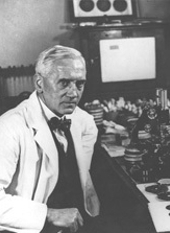
Sir Alexander Fleming (2)
Founder and first President 1945–1947
Alexander Fleming (1881–1955) was born on 6 August 1881 at Lochfield, near Darvel, Ayrshire, Scotland. He qualified at St Mary’s Hospital Medical School in 1906 and was asked to join the research department, where he became Assistant Bacteriologist to Sir Almroth Wright, a pioneer in vaccine therapy and immunology. In 1909, he developed a medium for isolating the acne bacillus which led to the successful treatment of cases with vaccines. Shortly after, he began work on a new drug, Salvarsan, for the treatment of syphilis. This marked the beginning of chemotherapy and Alexander Fleming’s lifelong interest in the investigation of chemical antiseptics in the treatment of infection.
-
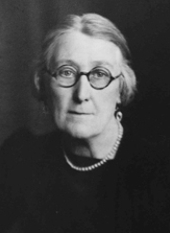
Marjory Stephenson
President 1947–1948
Marjory Stephenson (1885–1948) played an active part in founding the Microbiology Society, attending numerous preparatory committee meetings between November 1943 and February 1945. She served on the Committee of the Society from its foundation and was unanimously elected as the Society’s second President in September 1947.
-
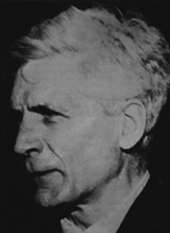
J. Walter McLeod
President 1949–1952
Walter McLeod (1887–1978) was born in Dumbarton, near Glasgow, on 2 January 1887. In 1903, aged only 16, he entered the University of Glasgow as a medical student, graduating MB ChB with commendation in 1908. Walter was appointed Coats Scholar, and later Carnegie Scholar, in the Department of Pathology, where he worked under Carl H. Browning on bacterial haemolysins. In 1912, he left Scotland to become Assistant Lecturer in Pathology at Charing Cross Hospital Medical School where he continued his research on bacterial haemolysins and also studied the culture of spirochaetes.
1950-1960
-
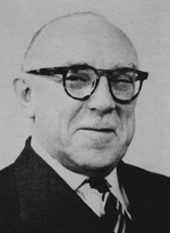
Henry J. Bunker
President 1952–1955
Along with Marjory Stephenson and Paul Fildes, Henry Bunker was one of a small group that met together before 1940 to discuss the formation of the Society. When the Society was founded in 1945, Henry became its first Treasurer. As well as his term as Society President, he was elected to serve on the Council for two further periods, 1957–1960, and 1963–1967, after he had retired from the Presidency. The Society made him an honorary member in 1967.
-
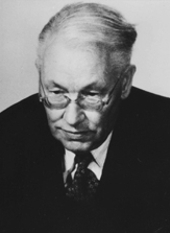
Sir Christopher Andrewes
President 1955–1957
Christopher Andrewes (1896–1987) began his career as an assistant resident physician at the Hospital of the Rockefeller Institution in New York City, where he stayed for two years. Having decided to pursue a research career in virology, a field in which he spent nearly 40 years, Christopher joined the scientific staff of the Medical Research Council at Hampstead in North London in 1927, where he worked on the role of viruses in transmittable tumours in animals.
-
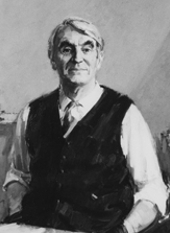
Sir Ashley Miles
President 1957–1959
Arnold Ashley Miles (1904–1988) was born in York and read medicine at Kings College, Cambridge. As an undergraduate, he developed what proved to be a life-long interest in pathology. His clinical training at St Bartholomew’s Hospital, at a time when infection was rife and treatment almost entirely non-specific, centred his interest on the mechanisms in microbe and host which could account for the initiation of symptoms, their variety and for the outcome of infection.
-
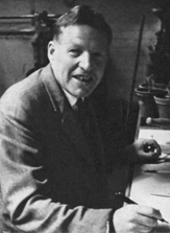
Sir Frederick C. Bawden
President 1959–1961
Fred Bawden (1908–1972) was born in North Tawton, Devon, and educated at Okehampton Grammar School, where botany was the main science subject. This gained him a Ministry of Agriculture and Fisheries’ scholarship to Emmanuel College, University of Cambridge. While taking a Diploma in Agricultural Science he met Redcliffe N. Salaman and joined his staff at the Potato Virus Research Station. Fred was at first mainly concerned with necrotic diseases of the potato. As a side-line, he experimented with infrared photography to show up necroses clearly.
1960-1970
-
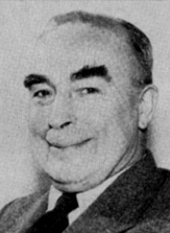
Reginald Lovell
President 1961–1963
Reginald Lovell (1897–1972) was born on 2 January 1897 and was educated at The Thomas Hardye School, Dorchester. In World War I, he joined the Dorset Yeomanry. His association with the Cavalry greatly influenced his choice of career as a veterinarian, and he joined the Royal Veterinary College, London, where he graduated in 1923. Soon afterwards, in 1925, he joined the University of Manchester as Demonstrator in Bacteriology. Later he became Research Assistant and Lecturer at the London School of Hygiene & Tropical Medicine, where he worked between 1927 and 1933. His work in Manchester had attracted the attention of William W.C. Topley, whose department he joined, for he had already gained a reputation as a bacteriologist as a result of his work on Salmonella. At the London School of Hygiene & Tropical Medicine he became associated in work of considerable importance relating to penicillin.
-
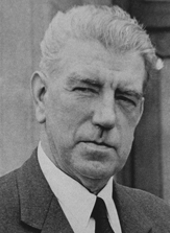
David W. W. Henderson
President 1963–1965
David Willis Wilson Henderson (1903–1968) was born in Glasgow on 23 July 1903. He enrolled under J.F. Malcolm at the West of Scotland Agricultural College, where he graduated with Agricultural Bacteriology as his major subject in 1926. David’s first post was as Lecturer in Bacteriology at King’s College, University of Durham, where, in 1930, he received an MSc. In 1934, he was awarded a PhD by the University of London for work on spore-bearing anaerobes.
-
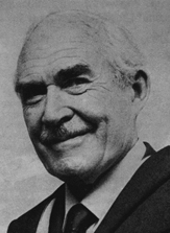
Percy W. Brian
President 1965–1967
Percy Wragge Brian (1910–1979) was regarded as one of the most distinguished botanists of his time. He gained a first-class degree in the Natural Sciences Tripos at Cambridge in 1931, was awarded the Frank Smart Studentship in Botany, and in 1936 gained a PhD for his thesis on the physiologic races of brown rust on species of Bromus. The results of this work were incorporated in an important joint paper in 1954, which effectively disproved the existence of the so-called ‘bridging hosts’ in the transmission of rusts. After two years on the staff of Long Ashton Research Station, Percy joined Imperial Chemical Industries (ICI), first at Jealott’s Hill Agricultural Research Station from 1936 to 1946, and then for 17 years at the Akers Research Laboratories, Welwyn. This period of more than a quarter of a century saw the most prolific output of original scientific work of his career and brought many important and seminal research papers in botany and mycology.
-
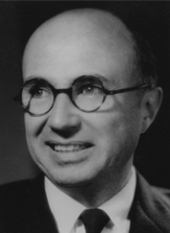
Ernest F. Gale
President 1967–1969
Ernest Gale (1914–2005) was born in Luton in 1967 and brought up in Weston-super-Mare. He made significant contributions to the Society's activities during its early years. His major contribution to microbiology was in emphasising the chemical and enzymatic basis of microbial activities, at a time when many cellular components and biochemicals were ill-defined. These ideas were published in 1947 in the ground-breaking book The Chemical Activities of Bacteria.
-
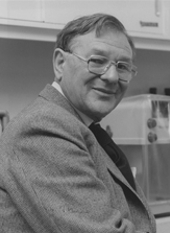
Sidney R. Elsden
President 1969–1972
Sidney Elsden (1915–2006) was an Original Member and then an Honorary Member of the Society, serving on Council from 1963 to 1967 and as President from 1969 to 1972.
Sidney spent his early years in Cambridge and, after attending the Cambridge and County School for Boys, entered Fitzwilliam House (now Fitzwilliam College), University of Cambridge, and graduated in 1936 with a double first in the Natural Sciences Tripos. Following a year of research in the University of Cambridge Biochemistry Department under Marjory Stephenson, who kindled his lifelong interest in micro-organisms, he was appointed to a lectureship in the Physiology Department of Edinburgh University. In 1941, he gained his PhD from the University of Cambridge for biochemical work on bacteria and on muscle tissue. His long association with the Agricultural Research Council (ARC) began in 1942 when he joined their Unit of Animal Physiology in Cambridge. Here he devised an innovative method for the separation of short-chain fatty acids on silica gel columns and used it to investigate their microbial production in ruminants.
1970-1980
-
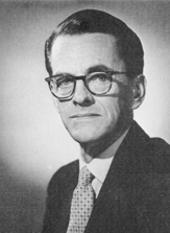
Sir David G. Evans
President 1972–1975
David Evans (1909–1984) was born in Atherton, near Manchester. In 1933 he graduated with a degree in Physics and Chemistry from the University of Manchester, and he gained his Master of Science in 1934. He finished his PhD in 1938 and began working at the National Institute for Medical Research (NIMR) two years later. He left in 1947 to become a Reader in the Bacteriology Department at the University of Manchester but returned to the NIMR in 1955 as Director of the Biological Standards Department.
-
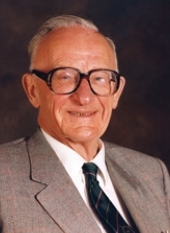
Harry Smith
President 1975–1978
Harry Smith (1921–2011) was born in Northampton and educated at Northampton Grammar School. He specialised in microbial pathogenicity and was renowned for his pioneering studies on how bacteria survive in vivo. He first studied Pharmaceutical Chemistry at University College, Nottingham (now the University of Nottingham), when it was still an outpost of the University of London. His PhD involved the first chemical synthesis of a dinucleotide. In 1947 he moved to the Microbiology Section of the Chemical Defence Experimental Station (Porton Down). There he investigated the virulence-enhancing properties of mucin. This led to the discovery that sometimes multiple factors combine synergistically to produce their biological effect. In the case of mucin, three factors were involved in the interaction: heparin, chondroitin sulfate and blood group substance, none of which were active alone.
-
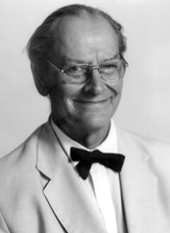
Peter L. Wildy
President 1978–1981
Peter Wildy (1920–1987) was educated at Eastbourne College and then went on to study medicine at Cambridge University and St Thomas's Hospital Medical School in London. He qualified MRCS LRCP (1944) and MB BChir (1948). Appointed to a Lectureship in Bacteriology there in 1952, he soon became interested in the rapidly growing field of virology and went to study with Sir Macfarlane Burnet at the Walter and Eliza Hall Institute in Melbourne, Australia. It was there that he started work on herpes, which was to be his major research interest for the remainder of his career. He continued this work on returning to St Thomas's and was appointed Senior Lecturer in Bacteriology in 1957. Next he went to the University of Cambridge and then to the University of Glasgow, where, with Michael Stoker as Director, he created the Medical Research Council's new Experimental Virus Research Unit. Peter was assistant director of the unit from 1959 to 1963.
1980-1990
-
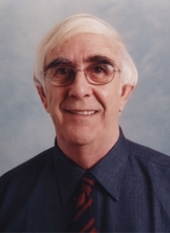
Roger Whittenbury
President 1981–1984
Professor Roger Whittenbury began his career at Edinburgh University's East of Scotland School of Agriculture before moving to Stanford University to take up a Research Fellowship. He later returned to the UK to the University of Edinburgh, and then on to the University of Warwick to take up the post of Professor of Biology.
-
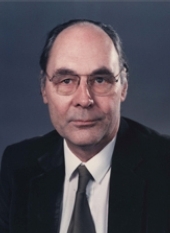
John R. Postgate
President 1984–1987
John Postgate (1922–2014) was Professor of Microbiology at the University of Sussex and Director of the Unit of Nitrogen Fixation from 1980 to 1987. Born on 24 June 1922, he attended Woodstock School (Golders Green, London) and Kingsbury County School (Middlesex), among others, then achieved First Class Honours in Chemistry from Balliol College, University of Oxford, followed by a DPhil for research in Chemical Microbiology. He later received a DSc from the University of Oxford.
-
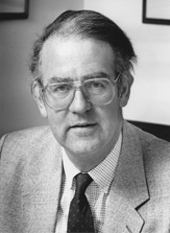
Derek C. Burke
President 1987–1990
Derek Burke (1930–2019) was born in 1930. He trained as a chemist at the University of Birmingham from 1947 to 1953, and subsequently did postdoctoral work at Yale University isolating novel nucleosides from a Caribbean sponge with arabinose as the pentose sugar. He returned to the UK and got a job at the National Institute for Medical Research from 1955 to 1960 working on influenza virus and interferon. He then worked at Aberdeen University as a lecturer, later senior lecturer, in Biochemistry. In 1969, he was appointed by the University of Warwick as the founding Professor of their new Department of Biological Sciences, where he continued research on the molecular biology of viruses and on interferon. He led a group which isolated clones of human interferon genes and also made the first monoclonal antibody against human interferon, both in collaboration with British companies. He was a member, for many years, of the working parties responsible for clinical trials of interferon in the UK.
1990-2000
-
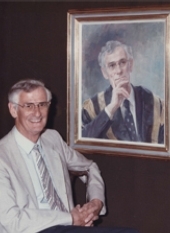
J. Rodney Quayle
President 1990–1993
Rod Quayle (1926–2006) was born and grew up in Mold, North Wales. Following his graduation in Chemistry from the University College of North Wales, Bangor, in 1946, he did a PhD with Professor E.D. Hughes in physical organic chemistry. His obvious talents were recognised with a senior research award from the Department of Scientific and Industrial Research and by Professor A.R. (later Lord) Todd who picked him to study the chemistry of blood pigments in Cambridge where he, unusually, took a second PhD in 1951. It was his research on photosynthesis with Professor Melvin Calvin at Berkeley that ignited his career in microbial C1 metabolism.
-

J.G. Jones
President 1993–1994
Professor J.G. Jones was head of a Freshwater Ecology Station in the Lakes District. Unfortunately, he had to resign soon after his election as President due to ill health.
-
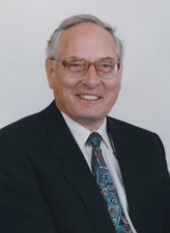
A. (Tony) P.J. Trinci
President 1994–1997
Tony Trinci was Professor of Cryptogamic Botany at the University of Manchester and one of the UK's leading mycologists. His research focused on human nutrition and health.
Professor Tony Trinci joined the Society in 1965. He is an expert in fungal cytology and physiology and was the first Chairman of the School of Biological Sciences. Trinci was a member of Council between 1979 and 1981. He later became an Editor of the Journal of General Microbiology (now Microbiology) in 1990 and held the position for four years. He was elected President of the Society in 1994 and awarded Honorary Membership in 2000.
-
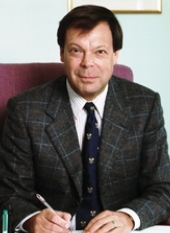
Sir Howard Dalton
President 1997–2000
Howard Dalton (1944–2008) was born in New Malden, Surrey. After attending Raynes Park Grammar School, Howard was awarded a place at Queen Elizabeth College, University of London, graduating in 1965 with a BSc in Microbiology. His research career started when he undertook a DPhil with Professor John Postgate FRS at the ARC Unit of Nitrogen Fixation, University of Sussex, where he worked on nitrogen fixation in the soil genus Azotobacter and helped to elucidate how this aerobic soil bacterium protects its nitrogenase from oxygen damage by augmentation of respiration and conformational protection mechanisms. Howard then worked for two years as a postdoctoral fellow with Professor Len Mortensen at Purdue University, Indiana, on the biochemistry of nitrogenase in the anaerobic genus Clostridium.
2000-2010
-
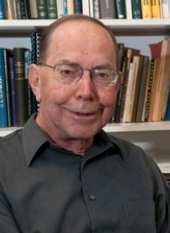
David Hopwood
President 2000–2003
David studied botany at Cambridge, with a particular interest in genetics. When he graduated in 1954 it was suggested that the streptomycetes, then often thought to be intermediates between bacteria and fungi, would make an interesting subject for genetic analysis. During his PhD he discovered and harnessed natural gene exchange to make the first chromosome map of a streptomycete. With Audrey Glauert, he showed that the streptomycetes are in fact true bacteria and that their resemblance to fungi must have arisen independently. Nevertheless, the streptomycetes have revealed many genetic novelties compared with other bacteria.
-
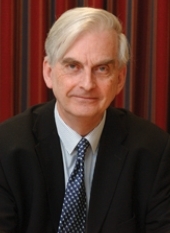
T. Hugh Pennington
President 2003–2006
Hugh Pennington is a Londoner by birth, a Lancashireman by upbringing and a Scot by domicile. He trained in medicine and obtained his PhD at St Thomas's Hospital Medical School. After a postdoc at the University of Wisconsin he spent 10 years at the MRC Institute of Virology in Glasgow, working on patterns of viral protein synthesis, before moving to the Chair of Bacteriology at Aberdeen University. Research there focused on the molecular typing of bacterial pathogens including E. coli O157, streptococci and MRSA. He was Dean of the Faculty of Medicine and chaired an inquiry into the 1996 central Scotland E. coli O157 outbreak and the Public Inquiry into the 2005 South Wales E. coli O157 outbreak.
-
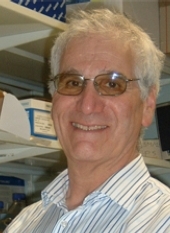
Robin A. Weiss
President 2006–2009
Robin A. Weiss FRS is Senior Research Fellow and Emeritus Professor of Viral Oncology in the Division of Infection and Immunity at University College London (UCL). Robin studied Zoology at UCL, graduating in 1961. After working as an MRC research assistant on population genetics in India, he became a virologist through his doctoral studies of Rous sarcoma virus in chickens as a tool for studying malignant transformation of cells. After postdoctoral sojourns in the Czech Republic and in the USA, Robin worked at the Imperial Cancer Research Fund Laboratories (now part of Cancer Research UK). From 1980 to 1996, he was Director of Research at the Institute of Cancer Research, London, returning to UCL in 1999.
-

Hilary Lappin-Scott
President 2009–2012
Professor Hilary Lappin-Scott completed her PhD at the University of Warwick on the biodegradation of phenoxyalkanoic herbicides by rhizosphere communities. She undertook a postdoctoral Fellowship at Calgary University before establishing her own research group at the University of Exeter, working on unravelling the complexities within biofilm communities. This resulted in the successful training of 50 PhD students to completion, many of whom have senior academic posts or senior posts in multi-national businesses.
2010-2021
-
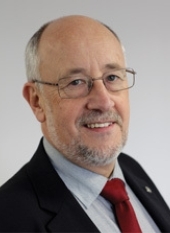
Nigel L. Brown
President 2012–2015
Nigel Brown studied Biochemistry at the University of Leeds, where his PhD was
-
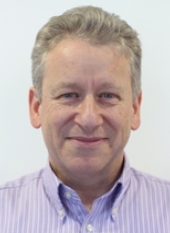
Neil A.R. Gow
President 2016–2018
Neil Gow undertook his undergraduate degree at the University of Edinburgh, then gained his PhD from the University of Aberdeen. He is a founding member of the Aberdeen Fungal Group and was the Co-Director for Research at the centre's Medical Mycology section. Having worked at the University of Aberdeen for 38 years, he became a Professor of Microbiology and the Deputy Vice Chancellor at the University of Exeter in 2018.
-
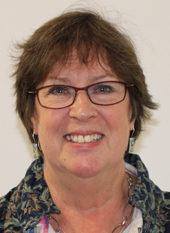
Judith Armitage
President 2019–2021
Judith Armitage gained her PhD at University College London in 1976. A bacterial physiologist using interdisciplinary approaches to study bacterial behaviour, she joined the Society as a PhD student in the early 1970s. She has been based in Oxford since 1985 and is a Fellow of Merton College. Judith was an Editor of the Journal of Bacteriology for 10 years and is currently one of the two Editors-in-
2022-present
-
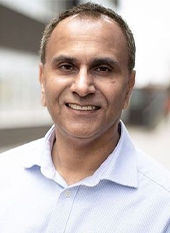
Gurdyal Besra
President 2022–present
Professor Besra joined the Society in 1999 and is Bardrick Professor of Microbial Physiology and Chemistry at the University of Birmingham where he heads a world-leading multidisciplinary team investigating key aspects of the microbial physiology of the Mycobacterium tuberculosis cell wall and the potential role of iNKT/CD1d therapeutics. Professor Besra is widely recognised for his contributions to science, including the Microbiology Society’s Unilever Colworth Prize (2016); the Biochemical Society Award (2008) and Morton Lecture (2020); the Jeremy Knowles Medal (2014) and Carbohydrate Award (2003) from the Royal Society of Chemistry. He was elected a Fellow of the Academy of Medical Sciences in 2013 and a Fellow of the Royal Society in 2019.


